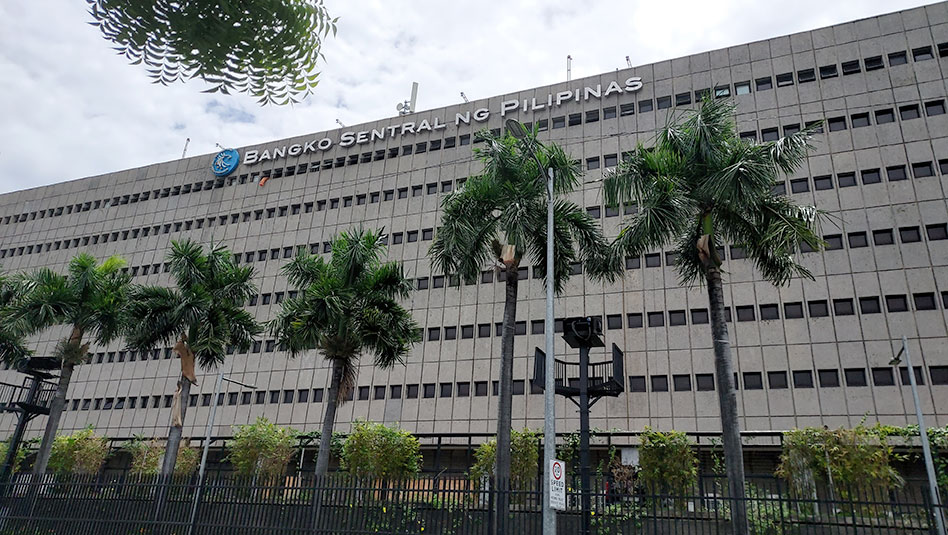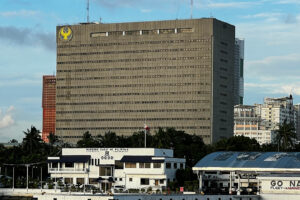




Policy Rate Updates: Closer to BSP’s Goldilocks moment
 DOWNLOAD
DOWNLOAD

Inflation Update: Speeds up but remains below target
 DOWNLOAD
DOWNLOAD

Monthly Economic Update: Fed back on track
 DOWNLOAD
DOWNLOAD


Yields on BSP’s term deposits slip with inflation seen to slow

Yields on the Bangko Sentral ng Pilipinas’ (BSP) term deposits slipped on Wednesday amid expectations of slower inflation this month.
The central bank’s term deposit facility (TDF) attracted bids amounting to PHP 281.954 billion on Wednesday, below the PHP 340 billion on the auction block and the PHP 329.014 billion seen a week ago for a PHP 360-billion offer.
Broken down, tenders for the seven-day papers reached PHP 136.488 billion, lower than the PHP 180 billion auctioned off by the central bank and the PHP 171.408 billion in bids for a PHP 185-billion offer seen the previous week.
Banks asked for yields ranging from 6.56% to 6.612%, a tad narrower than the 6.55% to 6.613% band seen a week ago. This caused the average rate of the one-week deposits to decline by 0.09 basis point (bp) to 6.5847% from 6.5856% previously.
Meanwhile, bids for the 14-day term deposits amounted to PHP 145.466 billion, failing to beat the PHP 160-billion offering as well as the PHP 157.606 billion in tenders for a PHP 175-billion offer on Jan. 17.
Accepted rates were from 6.6% to 6.6499%, also narrower than the 6.59% to 6.65% margin recorded a week ago. With this, the average rate for the two-week deposits inched down by 0.03 bp to 6.6187% from the 6.619% logged in the prior auction.
The BSP has not auctioned off 28-day term deposits for more than three years to give way to its weekly offerings of securities with the same tenor.
The term deposits and the 28-day bills are used by the central bank to mop up excess liquidity in the financial system and to better guide market rates.
TDF yields were slightly lower on Wednesday as inflation is seen to continue its downward trend in January, Rizal Commercial Banking Corp. Chief Economist Michael L. Ricafort said in a Viber message.
On Monday, BSP Governor Eli M. Remolona said inflation is projected to slow further in January from the 3.9% print in December due to base effects, which could also drive inflation down in February or March.
Inflation peaked at 8.7% in January last year as food prices soared. It has since come down to a 22-month low in December.
For 2023, inflation averaged 6%, slightly higher than 5.8% in 2022. This marked the second straight year that inflation breached the BSP’s 2-4% target.
However, despite inflation’s downtrend, Mr. Remolona said the Monetary Board may keep the current policy settings sufficiently tight until the consumer price index is firmly within the BSP’s 2-4% annual target.
He also said a rate cut is possible but unlikely to happen in the first semester of the year given lingering upside risks to inflation.
The Monetary Board hiked benchmark borrowing costs by 450 bps from May 2022 to October 2023, bringing the policy rate to a 16-year high of 6.5%.
At its December meeting, the BSP’s risk-adjusted inflation forecast stood at 4.2% this year and 3.4% for 2025. Meanwhile, its average inflation baseline forecast is at 3.7% for 2024 and 3.2% for next year.
The BSP will hold its first policy review of the year on Feb. 15.
TDF yields slipped on Wednesday after less dovish statements from the US Federal Reserve, Mr. Ricafort added.
In the last comments before Fed officials entered a blackout period ahead of their Jan. 31 policy decision, San Francisco Fed President Mary Daly said Friday she believes monetary policy is in a “good place” and it is premature to think rate cuts are imminent, Reuters reported.
Earlier that week, Fed Governor Christopher Waller said policy makers would move “carefully and slowly,” which traders took as pushing back at pricing for a speedy fall in rates.
The US central bank hiked borrowing costs by 525 bps from March 2022 to July 2023, bringing the fed funds rate to 5.25% to 5.5%. — Keisha B. Ta-asan
This article originally appeared on bworldonline.com





 By BusinessWorld
By BusinessWorld